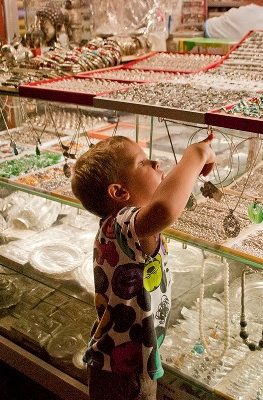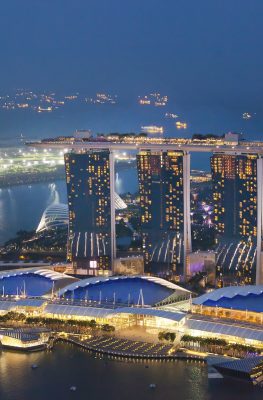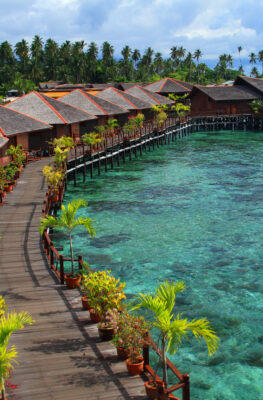Published on December 6, 2015
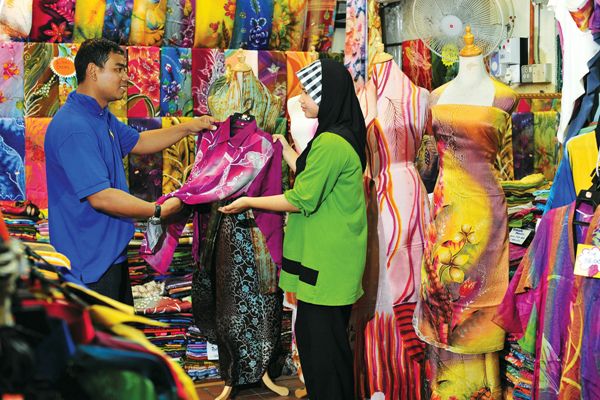
For generations now, the graceful, colorful and intricate patterns that adorn batik cloths from Southeast Asia have captured the imagination of fashion-conscious travelers. Today’s batik-seeking tourists follow in the footsteps of 19th-century Dutch colonists in Indonesia: captivated by the radiant batiks worn by the Javanese, the Dutch brought batik artists to Holland in the 1830s, eventually allowing the spread of batik to Germany and as far as West Africa.
Meanwhile, the art of batik radiated outward from Indonesia to Malaysia, Singapore and Brunei. The batiks in these countries now rival those from Indonesia in technique and sheer vibrance.
First, a short primer on batik – it’s what is known as a resist-dyeing technique, where a substance is applied on cloth to resist a later dyeing process. In the hands of a batik artist, this simple technique creates brilliant results.
Using a reservoir pen called a canting, the artist draws lines of melted beeswax on silk or cotton. The cloth is then dyed, and then boiled to remove the beeswax. This treatment – batik tulis – creates beautiful if costly batik. Silk batik tulis shirts are considered acceptable business wear in Indonesia and Malaysia.
The process called batik cap produces cheaper batiks – workers dip an intricately patterned copper stamp called a cap into wax, then apply it to the cloth repeatedly. This process is more cost effective, but lacks the snob appeal of batik tulis.
In Indonesia, the Javanese are the art’s most enthusiastic practitioners. Central Java now nurtures respective cottage industries that produce some of the region’s finest batiks.
Indonesians find meaning in traditional batik motifs. A batik parang – with long shapes suggesting swords – reminds one of the use of force, and is consequently reserved for the Sultan and his retainers. A more geometric ceplok grompol pattern suggests a community coming together, and is thus more popular for weddings.
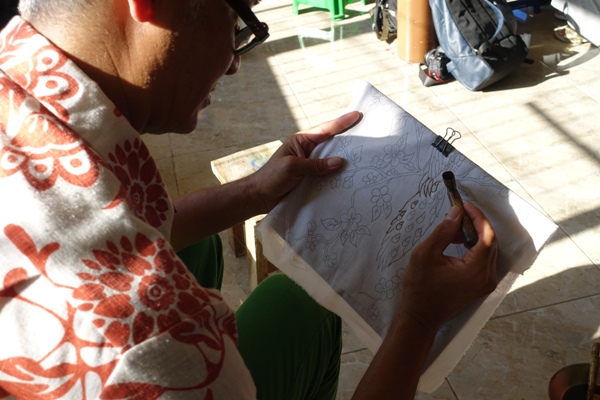
These and many other patterns can be found in central Java’s kampung batik, or batik villages. For hundreds of years, kampung batik like Pekalongan have produced fine, handmade batiks for Indonesia’s royalty and nobles. In Yogyakarta, the Museum Batik showcases these kampung batik’s finest products, and gives visitors a chance to make their own.
In Malaysia, batik is synonymous with the eastern coast states of Kelantan and Terengganu. In these states, most batik artists prefer to use a brush to apply the wax-resist pattern instead of a canting. This is not the only way Malaysians do batik differently compared to their Indonesian counterparts: local artists prefer to depict leaves and flowers, in closer accordance to the Islamic ban on depicting animal images in art. The dye colors also tend to be lighter and more cheerful, compared to Indonesian batiks’ deep shades.
In Kota Bahru, Kelantan, the market of Pasar Siti Khadijah yields rich batik-shopping rewards, with over 200 entrepreneurs producing traditional hand-made batiks for shoppers’ perusal. In Terengganu’s Pasar Payang, stacks of locally made batiks compete to catch your eye.
Further south, shoppers looking for batiks in Singapore can venture to the ethnic enclave known as Kampong Glam, where cloth sellers have made a niche in the nation’s vibrant shopping landscape. Kampong Glam reflects a more traditional scene, with generations-old purveyors selling a wide variety of batiks to locals and tourists alike.
Finally, Brunei now surprises batik enthusiasts with its small but rapidly growing batik scene. Pioneered by artist Zainal Abidin, Brunei’s batiks draw from local lore to produce uniquely Bruneian designs drawn from local plants. Brunei’s native flowers – the simpur and cengkeh among them – now feature visibly in Zainal’s hand-crafted fabrics.
Wherever you get your batiks from, you’ll be taking home a unique piece of the local culture that can start conversations wherever else in the world you go!




